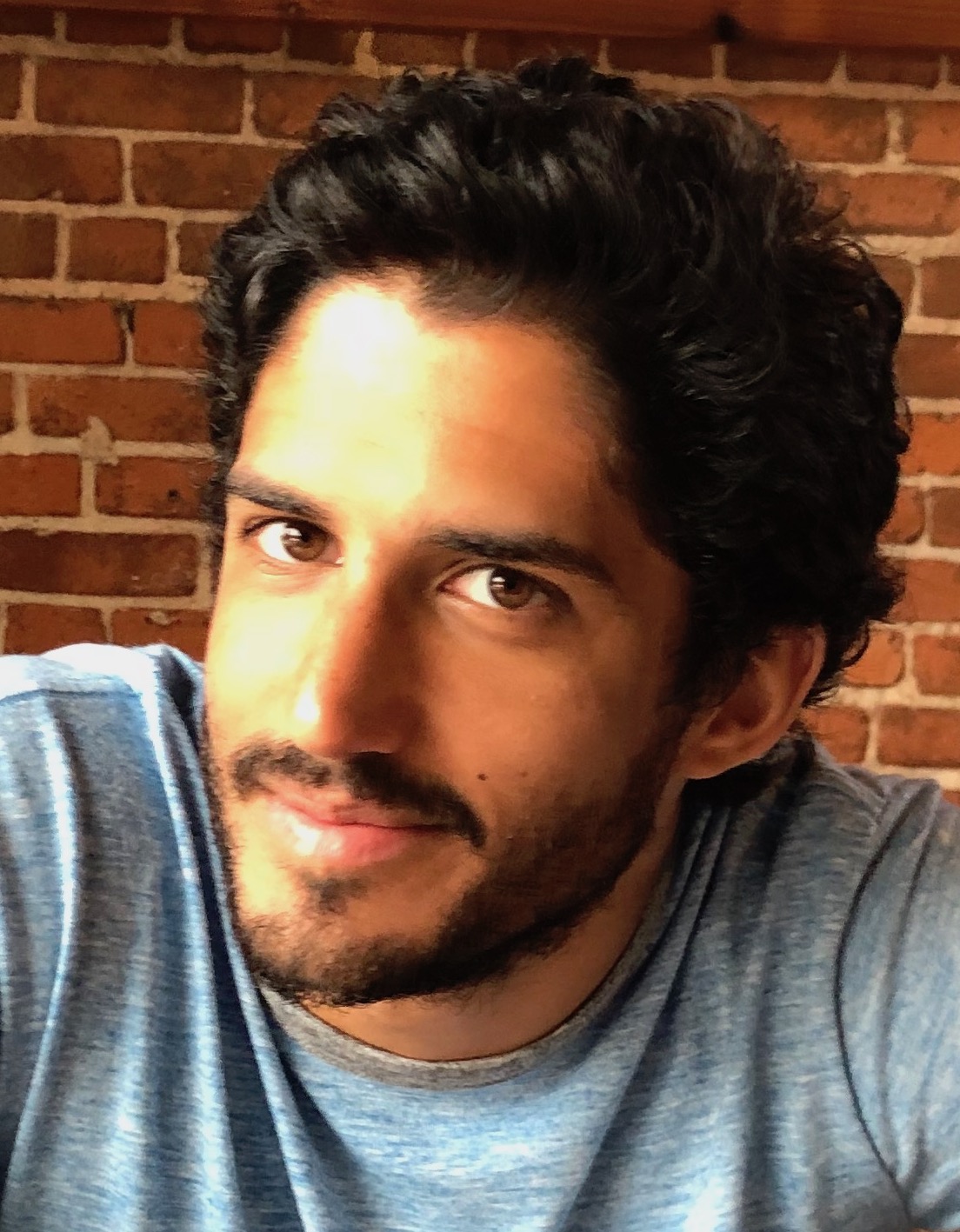Chundra Cathcart

PD Dr. Chundra Cathcart
Senior Researcher (Oberassistent)
Distributional Linguistics Lab
Group Leader of
Quantitative Diachronic Linguistics Group
I am a diachronic linguist whose work has a quantitative and computational bent. My main interests concern sound change and morphosyntactic change. Broadly speaking, I am interested in the pressures that interact to shape the synchronic profiles of languages, with a focus on languages of Central, South and Southeast Asia. I use a wide range of tools in my approach to these issues. I use a wide range of quantitative and computational tools to investigate these issues, including Bayesian models and methods from deep learning, and seek to develop models that are flexible enough to address a wide range of questions of interest to diachronic linguists and linguists more generally.
For more information, please visit my personal website
Teaching
| V-Nr | Course | Start / End | Date | Lecturers | Room |
|---|---|---|---|---|---|
| 2985 |
06UE272-503a
|
from 18.09.2025
to 18.12.2025
|
Do 10:15-12:00 | Chundra Cathcart | BIN-1-E.01 |
| 5189 |
06VL274-501a
|
from 17.09.2025
to 19.12.2025
|
Mi 12:15-13:45, Fr 12:15-13:45 | Silvia Brem Judith Maria Burkart Chundra Cathcart Paola Cerrito Nathalie Régine Giroud Rickenbacher Hans-Johann Glock Richard Hahnloser Lena Ann Jäger Sebastian Krapp Marta Manser John Mansfield Martin Meyer Andrea Migliano Kentaro Shimizu Sabine Stoll Simon William Townsend Paul Widmer Carolus Ph. van Schaik | AFL-E-022 |
ZORA Publication List
Download Options
Publications
-
Usage-based evolutionary models reveal context-specific word order change in Indo-European Language Dynamics and Change, 15, 1–35. https://doi.org/10.1163/22105832-bja10039
-
Outstanding problems in Persian historical phonology: toward a quantitative solution In: Korangy, Alireza; Mahmoodi-Bakhtiari, Behrooz . The Handbook of Persian Dialects and Dialectology. Singapore: Springer, 149-175.
-
Linguistic evolution in time and space: Addressing the methodological challenges In: Raviv, Limor; Boeckx, Cedric . The Oxford Handbook of Approaches to Language Evolution. Oxford, UK: Oxford University Press, 391-421.
-
Beyond bigrams: call sequencing in the common marmoset (Callithrix jacchus) vocal system Royal Society Open Science, 11(11):218-240.
-
Exploring the evolutionary dynamics of sound symbolism In: 46th Annual Meeting of the Cognitive Science Society, Rotterdam, 24 Juli 2024 - 27 Juli 2024. UC Merced, 1076-1083.
-
Finding proportionality in computational approaches to morphological change In: 15th International Conference on Language Evolution (Evolang XV), Madison, WI, 18 May 2024. Max Planck Institute for Psycholinguistic, 83.
-
Short vs long stem alternations in Romance verbal inflection: the S-morphome Transactions of the Philological Society, 122(1):49-78.
-
Multiple evolutionary pressures shape identical consonant avoidance in the world’s languages Proceedings of the National Academy of Sciences of the United States of America, 121(27):e2316677121.
-
Review of Frederik Hartmann: Germanic phylogeny Folia Linguistica Historica, 45(1):325-330.
-
Paradigmatic heterogeneity and homogenization: probing Paul's principle In: Kavitskaya, Darya; Yu, Alan . The life cycle of language: past, present, and future. Oxford: Oxford University Press, 371-385.
-
Rate variation in language change: Toward distributional phylogenetic modeling In: Karakostis, Fotios Alexandros; Jäger, Gerhard . Biocultural Evolution: An Agenda for Integrative Approaches. Tübingen: Kerns Verlag, 179-202.
-
The evolutionary trends of noun class systems in Atlantic languages In: Joint Conference on Language Evolution (JCoLE), Kanazawa, 5 September 2022 - 8 September 2022. Max Planck Institute for Psycholinguistic, 624-631.
-
Reconstructing the origins of language families and variation In: Lock, Andrew; Sinha, Chris; Gontier, Nathalie . The Oxford Handbook of Human Symbolic Evolution. Oxford: Oxford University Press, online.
-
Dialectal layers in West Iranian: A hierarchical dirichlet process approach to linguistic relationships Transactions of the Philological Society, 120(1):1-31.
-
The evolution of similarity avoidance: a phylogenetic approach to phonotactic change In: 2022 Annual Meetings on Phonology, Los Angeles, 21 Oktober 2022 - 23 Oktober 2022. Linguistic Society of America, online.
-
Decoupling Speed of Change and Long-Term Preference in Language Evolution: Insights From Romance Verb Stem Alternations In: Proceedings of the Joint Conference on Language Evolution (JCoLE), Kanazawa, Japan, 5 September 2022 - 8 September 2022, JCoLE.
-
Evolutionary dynamics of Indo-European alignment patterns Diachronica, 38:358-412.
-
Reconstructing the evolution of Indo-European grammar Language, 97(3):561-598.
-
Disentangling dialects: a neural approach to Indo-Aryan historical phonology and subgrouping In: Fernández, Raquel; Linzen, Tal . Proceedings of the 24th Conference on Computational Natural Language Learning. Online: Association for Computational Linguistics, 620-630.
-
Numeral classifiers and number marking in Indo-Iranian: A phylogenetic approach Language Dynamics and Change, 11(2):273-325.
-
Linguistic stability and change under small-scale egalitarian language contact: a mixture model approach In: CogSci 2020, Online, 29 July 2020 - 1 August 2020. Cognitive Science Society, 3109-3115.
-
In search of isoglosses: continuous and discrete language embeddings in Slavic historical phonology In: Nicolai, Garrett; Gorman, Kyle; Cotterell, Ryan . Proceedings of the 17th SIGMORPHON Workshop on Computational Research in Phonetics, Phonology, and Morphology. Association for Computational Linguistics: Association for Computational Linguistics, 233-244.
-
A probabilistic assessment of the Indo-Aryan Inner–Outer Hypothesis Journal of Historical Linguistics, 10(1):42-86.
-
Gaussian Process Models of Sound Change in Indo-Aryan Dialectology In: Proceedings of the 1st International Workshop on Computational Approaches to Historical Language Change, Florence, 2019. Association for Computational Linguistics, 254-264.
-
Toward a deep dialectological representation of Indo-Aryan In: Zampieri, Marcos . Proceedings of the Sixth Workshop on NLP for Similar Languages, Varieties and Dialects. Ann Arbor, Michigan: Association for Computational Linguistics, 110-119.
-
Diachronic Atlas of Comparative Linguistics (DiACL)—A database for ancient language typology PLoS ONE, 13(10):e0205313.
-
Modeling linguistic evolution: a look under the hood Linguistics Vanguard, 4(1):n/a.
-
Areal pressure in grammatical evolution: An Indo-European case study Diachronica, 35(1):1-34.
-
Decomposability and Frequency in the Hindi/Urdu Number System In: Proceedings of the 39th Annual Meeting of the Cognitive Science Society, London, July 2017. Cognitive Science Society, 1733-1738.
-
Vedic Post-Lexical Retroflexion: Opacity and Diachrony In: 50th annual meeting of the Chicago Linguistic Society, Chicago, 2014 - 2014.